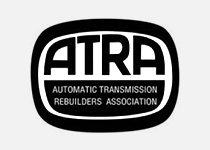Anyone who drives a manual transmission knows it is a completely different experience when compared to driving an automatic. Besides the obvious difference with manual shifting, there are completely different components in a manual transmission that automatic transmission drivers never have to deal with.
Unlike brake pads or motor oil, there isn’t a set mileage length that lets you know it’s time to change your clutch. Personal driving styles and specific driving environments are the two biggest factors that affect wear and tear, so you manual drivers need to learn the signs before it comes time to replace the clutch.
DIFFICULTY SHIFTING
Driving a manual transmission is all about the feel, so you’ll notice pretty quickly when things don’t start working as smoothly as they used to. The first places you’ll start to notice this trouble shifting is in first gear and reverse, so pay attention to how it feels and don’t push your way through it.
SOFT OR SPONGY FEEL
The clutch itself will start to feel soft meaning: how far you have to take the clutch out and in before the gear finally catches. It is a bad sign if you have to let the clutch out almost all of the way.
CLEAR VISUAL DAMAGE
Maybe you don’t know what a clutch even looks like, but looking at your clutch is probably the easiest way to find out if it’s is on its last leg. Motor heads will tell you to look for a noticeable amount of black powder around the clutch itself.
BURNING SMELL
A slipping or damaged clutch means friction, which means burning. It can be easy to mistake this smell with burned tires or other components on your vehicle, but it can help diagnose the problem if other warning signs are present.
If you suspect your clutch is in need of repair, National Transmission can help. We have five locations in Alberta.





